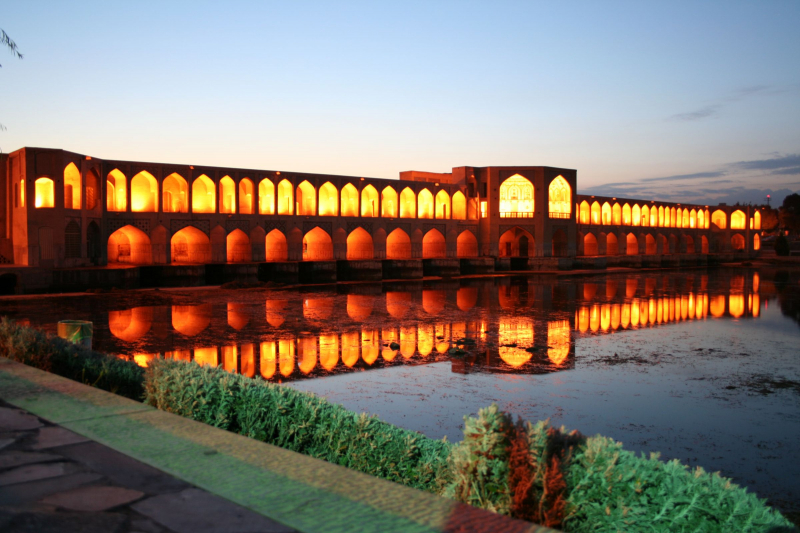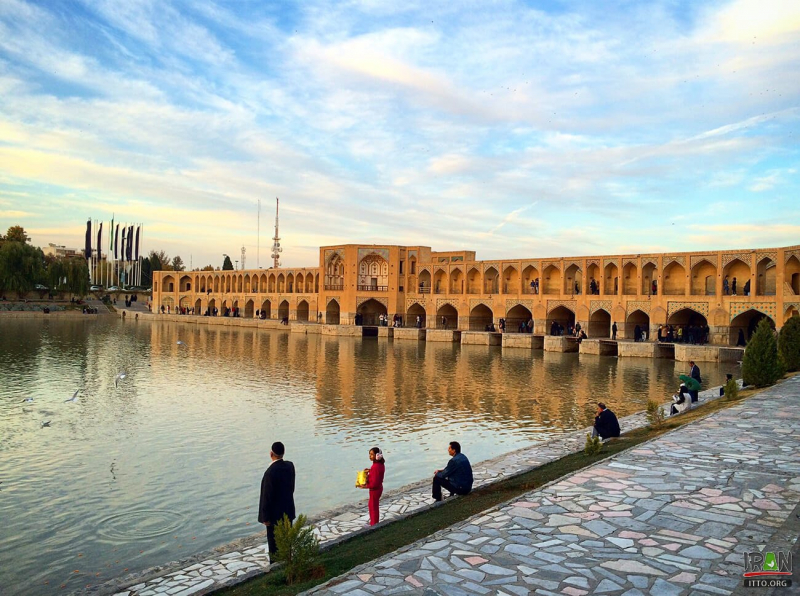Khaju Bridge

Top 13 in Top 14 Most Famous Bridges In The World
The Khaju Bridge is one of the historical bridges on the Zayanderud, the largest river of the Iranian Plateau, in Isfahan, Iran. Serving as both a bridge and a weir, it links the Khaju quarter on the north bank with the Zoroastrian quarter across the Zayanderud. It is located at the end of Kamal Ismail Street in Isfahan.
The bridge served a primary function as a building and a place for public meetings in the past. It has been described as the city's finest bridge. According to historians and scholars who have studied the Safavid dynasty, Shah Abbas II's goal in building the Khaju Bridge was to connect the two districts of Khaju and the Hassanabad Gate with Takht-e Folad and Shiraz Road. Tourists who came to Isfahan at different times praised the beauty of the Khaju Bridge and considered it one of the eternal masterpieces of Iranian and Islamic architecture.
The bridge is 133 meters long, 12 meters wide, and has 23 arches. It was used as a teahouse at one time and has tilework and paintings on the walls. The bridge's passageway is constructed of stones and bricks. The length of each stone utilized in the bridge is over two meters, and there are 21 meters between each channel and the base of the ceiling. Under the arches, there are a number of sluice gates that are used to control the Zayanderud's water flow. Horses and carts used the main central aisle on the bridge's upper level, and people used the domed walkways on each side. The lower level of the bridge is accessible to pedestrians and is still a well-liked spot for lounging in the shade.
Location: Isfahan, Iran
Architect: Iranian















